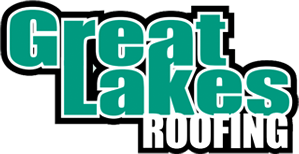The Roofing Blueprint: Understanding the Anatomy of a Durable Commercial Roof

The longevity and safety of a commercial building heavily depend on the quality and maintenance of its roofing system. Understanding the various components that contribute to a sturdy commercial roof can help building owners and managers ensure its efficiency and durability. Here’s a detailed look at the critical elements that make up a strong commercial roofing system.
Roof Decking
The roof decking is the base layer of any roofing system, providing structural support for all the layers above. In commercial buildings, decking is often made from metal, concrete, or engineered wood panels. It must be strong, moisture-resistant, and properly maintained to prevent water from compromising the building’s structure.
Underlayment
For commercial roofs, the underlayment is a critical component that offers an extra layer of protection against water penetration. This layer is typically more robust than those used in residential roofing, often made of durable synthetic materials or rubberized asphalt, to accommodate the flat or low-slope designs common in commercial buildings.
Roof Covering
The outermost layer of a commercial roof, the covering, is selected based on the building’s use, climate, and maintenance expectations. Options vary from built-up roofs (BUR) and thermoset EPDM roof membranes to thermoplastic PVC and TPO membranes, each offering unique benefits such as energy efficiency, durability, and ease of maintenance.
Flashing
Commercial roofs often feature more complex flashing systems due to the presence of numerous penetrations and equipment such as HVAC systems, vents, and skylights. Flashing on these roofs must be impeccably installed and regularly inspected to prevent leaks and ensure that water is directed away from critical areas.
Insulation
Proper insulation is vital in commercial roofing to manage energy costs and maintain a comfortable indoor environment. High-performance insulation also helps to reduce the building’s carbon footprint and prevent moisture-related issues like mold and mildew, which are particularly important in larger commercial spaces.
Drainage
Given the typically flat or low-slope design of commercial roofs, effective drainage systems are crucial. Adequate drainage ensures that water does not pool on the roof, which can lead to leaks and structural damage. Features such as internal drains, scuppers, and carefully planned slopes are essential components of a functional commercial roof.
Ventilation
Ventilation is crucial in commercial roofing to prevent heat accumulation and moisture buildup within the roof assembly. Properly designed ventilation systems help extend the life of the roof, reduce energy consumption, and protect the building materials from thermal and moisture damage.
By understanding these essential aspects of commercial roofing, building owners and managers can make informed decisions regarding maintenance, repairs, and replacements. Regular inspections and prompt attention to repair needs will keep your commercial roof functioning optimally and prevent minor issues from escalating into costly repairs.
For expert advice and top-quality service on your commercial roofing needs, turn to Great Lakes Roofing. We specialize in providing robust roofing solutions tailored to meet the unique demands of commercial properties. Contact us today to ensure your roof is in top condition and to discuss how we can help protect your investment for years to come.
CONTACT US
Subscribe to our Newsletter!
Emails you can trust
[instagram-feed]
